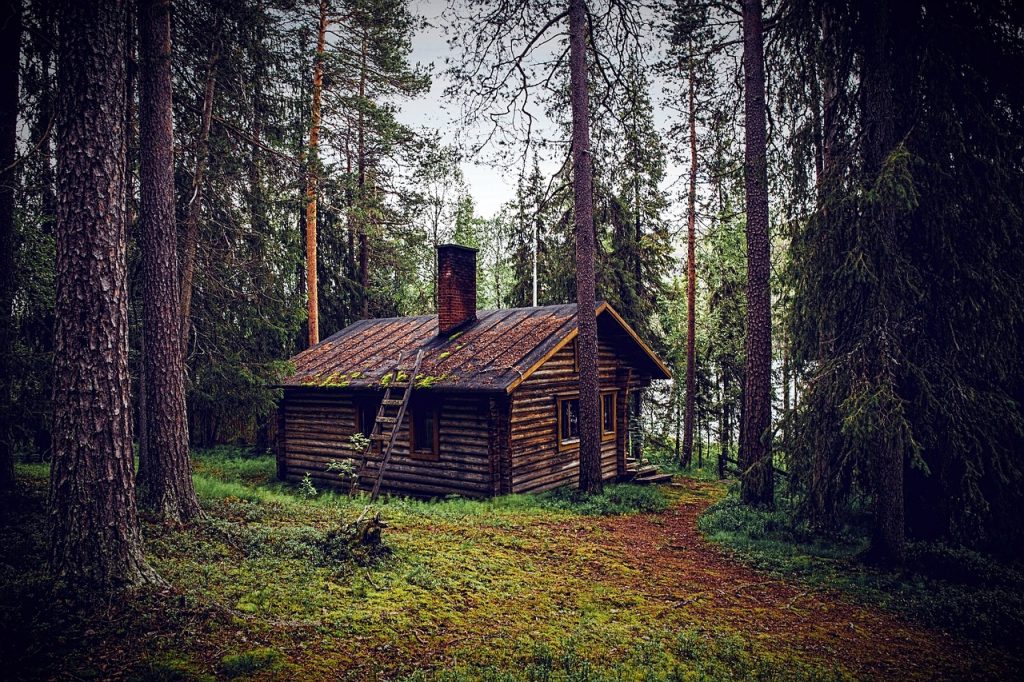Cabin Fever Posted by Gary Locke on Mar 26, 2020 in English Vocabulary, News
Do you have cabin fever yet? It’s an English language phrase of American origin, expressing a feeling of restless anxiety and boredom from being indoors for a prolonged period of time. It is also something that you may soon be experiencing.
Literally billions of people all over the world are finding themselves in self-isolation, or self-quarantine. For some, it’s an involuntary situation. The population of India, about 1.3 billion people, is currently ordered to stay inside. The same is true of millions of people in states and countries everywhere. Others have been ordered to remain in their homes by their doctors. Still, others are self-isolating because they feel that it’s their civic duty. They are doing it because they may have been exposed to COVID-19, and they don’t wish to infect anyone else. And, for many, if you aren’t in isolation now, you soon will be. Voluntary or not, for many it’s like being imprisoned.
What is Cabin Fever?
Historically, cabin fever was actually typhus, a disease caused by flea or tick bites, which has afflicted prisoners and people under siege during wartime for centuries. People confined together for long periods of time can suffer terribly. What begins as a rash can turn into fever and delirium. Untreated, typhus is fatal.
Americans in the 1800s who settled in the Great Plains, a large area west of the Mississippi and east of the Rocky Mountains, were often living in crude cabins, isolated from other human contacts for months. They could be totally alone, or with one or several family members. Neighbors could be miles away and, during winter, it was common to never see or hear from anyone. They were the first to describe the mental stress of those months as cabin fever. It’s a form of claustrophobia. The effects often drove these settlers insane.
Some link cabin fever with Seasonal Affected Disorder (note the three capital letters), which afflicts those who feel confined and depressed by winter with its poorer weather and shorter daylight hours. People who have it exhibit boredom, restlessness, irritability, depression, and an inability to concentrate. A familiar phrase associated with cabin fever is climbing the walls, a feeling that the confinement will make you claw at the walls to get out.
Other expressions for this affliction include:
- Shack Happy
- Stir Crazy
- Cat Scratch Fever
- Tennessee Log Cabin Fever
- A Long-Wet Weekend
That last expression is funny. It refers to going somewhere really nice for a holiday, only to have it rain the whole time. Now, imagine weeks of that.
Famous Examples
There are some who thrive under these conditions, for good or bad. One famous example is Henry David Thoreau, one of the great intellectuals of American history who famously secluded himself at Walden Pond. Then there was Theodore John Kaczynski1https://en.wikipedia.org/wiki/Ted_Kaczynski, the so-called Unabomber. He was a brilliant mathematics professor who abandoned academia to live in isolation, ultimately becoming a domestic terrorist.
In film and literature, there are many examples of cabin fever going terribly wrong. Perhaps none more so than Jack Torrance, the lead character in Stephen King’s novel (and subsequent Stanley Kubrick film), The Shining. Jack is an aspiring novelist and recovering alcoholic who takes the job as a winter caretaker at a seasonal resort hotel. Jack moves his family into the Overlook Hotel which is built on the site of a Native American burial ground. If you know anything about life, you probably know that nothing good can ever come from building on an ancient burial site.
Get outside during this period of social distancing, if you possibly can. For most, it’s perfectly okay to take a walk or a secluded drive, as long as you maintain a respectful distance of at least six feet from others.
Don’t be like Jack.
- 1https://en.wikipedia.org/wiki/Ted_Kaczynski

Build vocabulary, practice pronunciation, and more with Transparent Language Online. Available anytime, anywhere, on any device.




